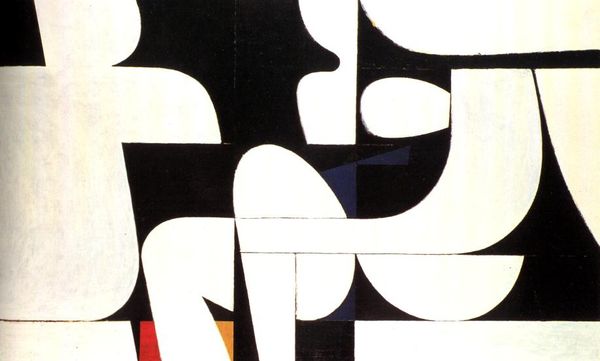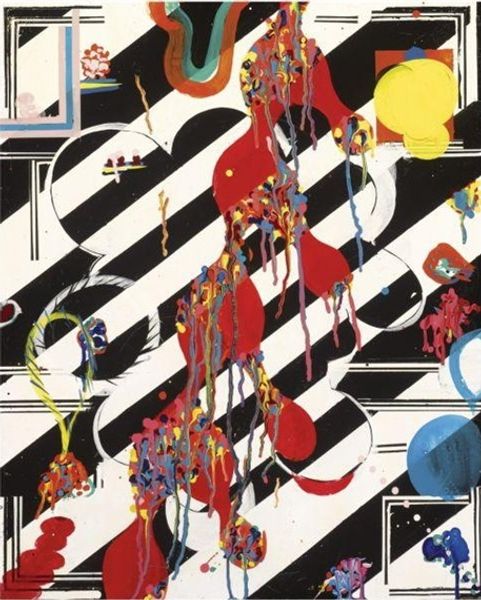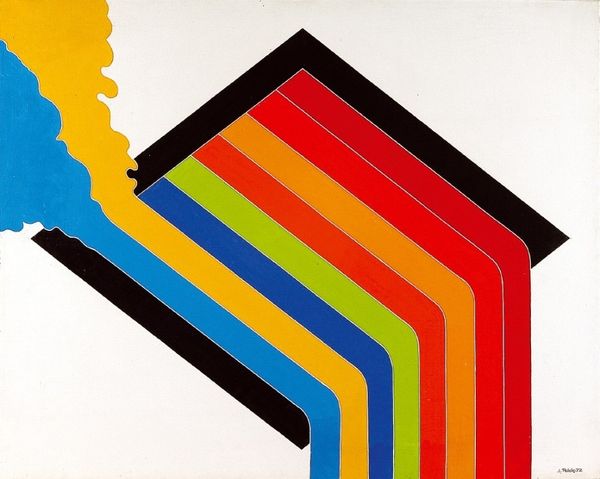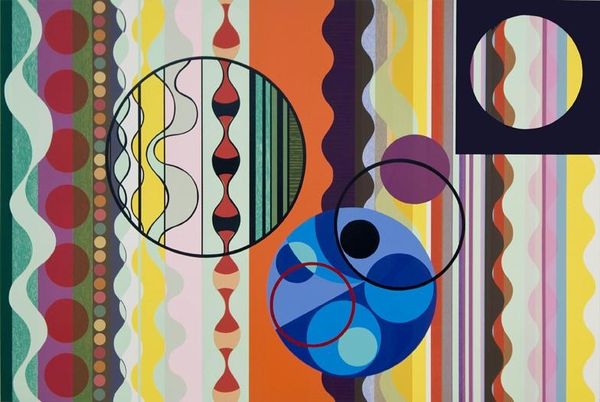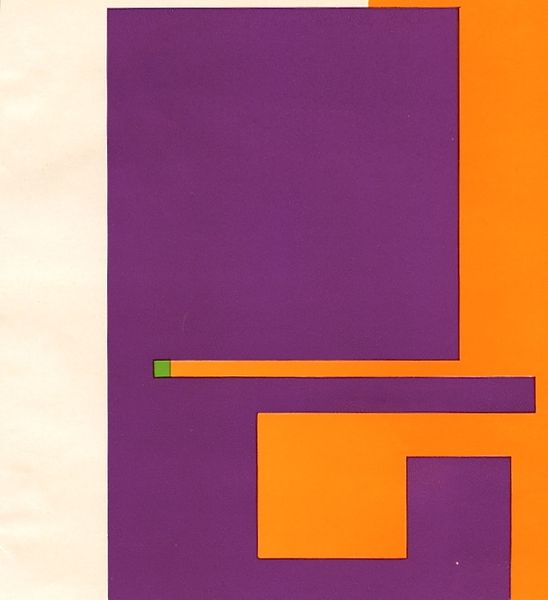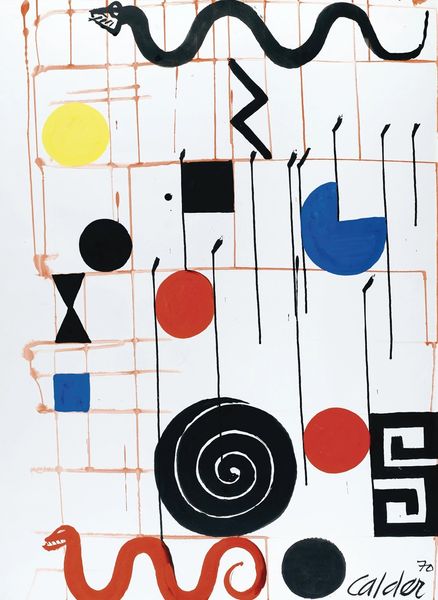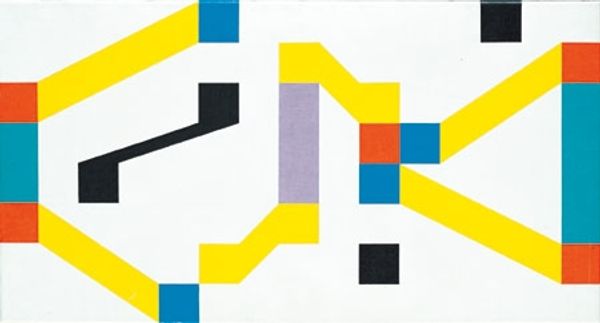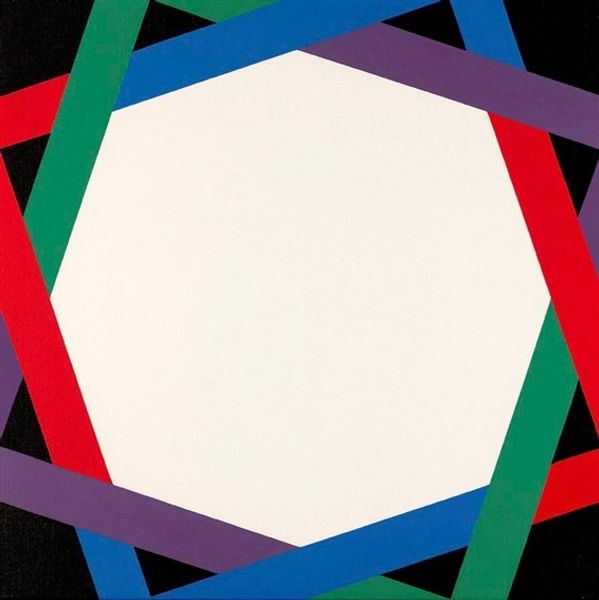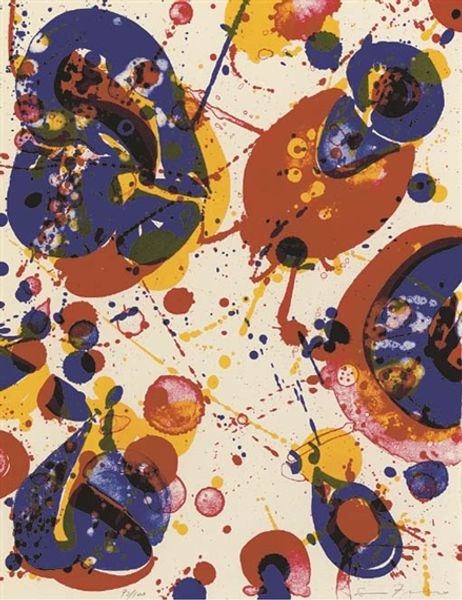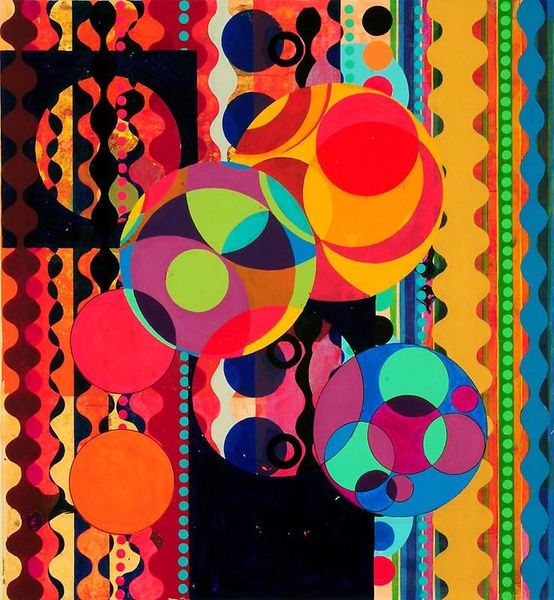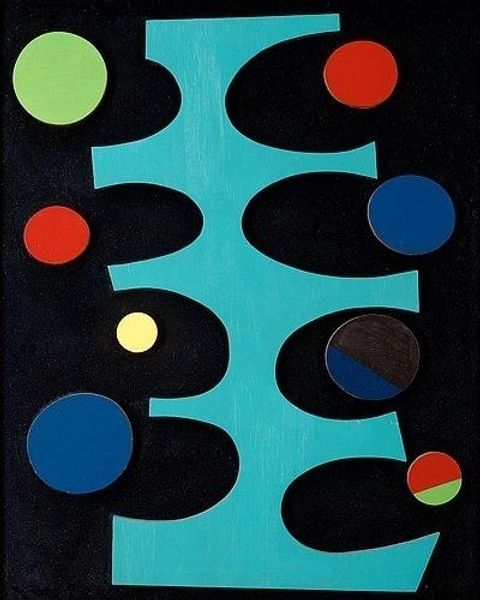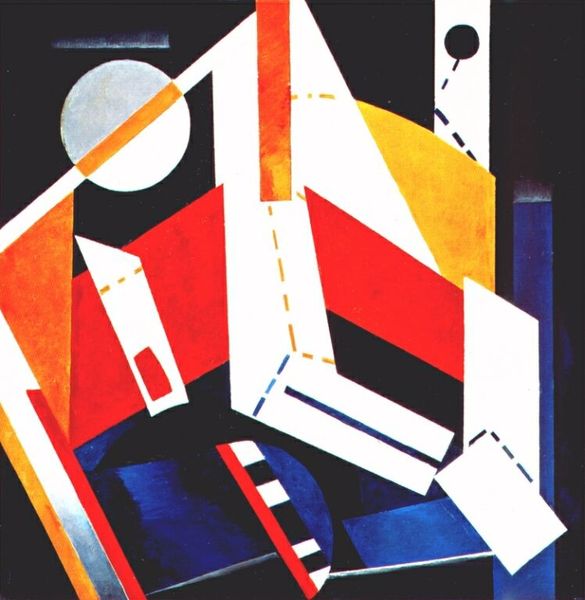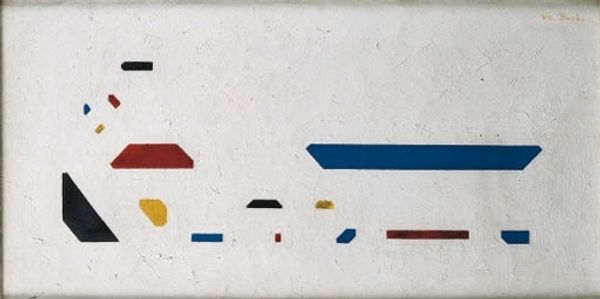
mixed-media, acrylic-paint
#
kinetic-art
#
mixed-media
#
op-art
#
postmodernism
#
pop art
#
acrylic-paint
#
geometric-abstraction
#
abstraction
#
modernism
Copyright: Yaacov Agam,Fair Use
Curator: Yaacov Agam, a key figure in kinetic art, produced "Night Over Jerusalem." He worked with mixed media, including acrylic paint, to achieve this composition. Editor: Immediately, I'm struck by how these shapes hover against the darkness, creating a tension that's both playful and profound. It has an almost musical rhythm. Curator: Agam's works were deeply embedded in the post-war quest for new visual languages, with ties to Op Art and geometric abstraction, reflecting the era’s interest in exploring perception and experience. It’s an abstraction rooted in very real sociopolitical issues and aspirations for harmony, particularly relevant given Agam’s background. Editor: Harmonious maybe, but definitely dynamic. There’s no single focal point. Your eyes constantly move across these bars and orbs. The color palette, though restricted, adds to this visual vibration—reds play against greens, yellows against blues. Curator: Agam believed that art should not be static but rather offer multiple perspectives, challenging viewers to engage actively with the artwork. Remember, kinetic art is about the active participant. In that spirit, this artwork was made after the Six-Day War and during a turning point in attitudes to what was possible for Jerusalem as a city. Editor: This almost grid-like structure seems to provide a base for a city, but that's soon disrupted, softened with those organic shapes. Curator: Think of it reflecting a larger ambition—reimagining and restructuring society post-conflict. Agam was advocating for visual harmony in deeply divided landscapes. Editor: Yes, "Night Over Jerusalem," for me it embodies restless energy, a city constantly in motion, constantly perceived from various angles. And a good illustration of why formal elements—shape, color, and composition—carry as much significance as any explicit reference to historical context. Curator: Indeed, understanding the broader artistic movements of the time gives an insight into its intentions. Art as a catalyst for social engagement is critical here. Editor: An active surface hinting at deeper ideas; not so passive as it seems.
Comments
No comments
Be the first to comment and join the conversation on the ultimate creative platform.
